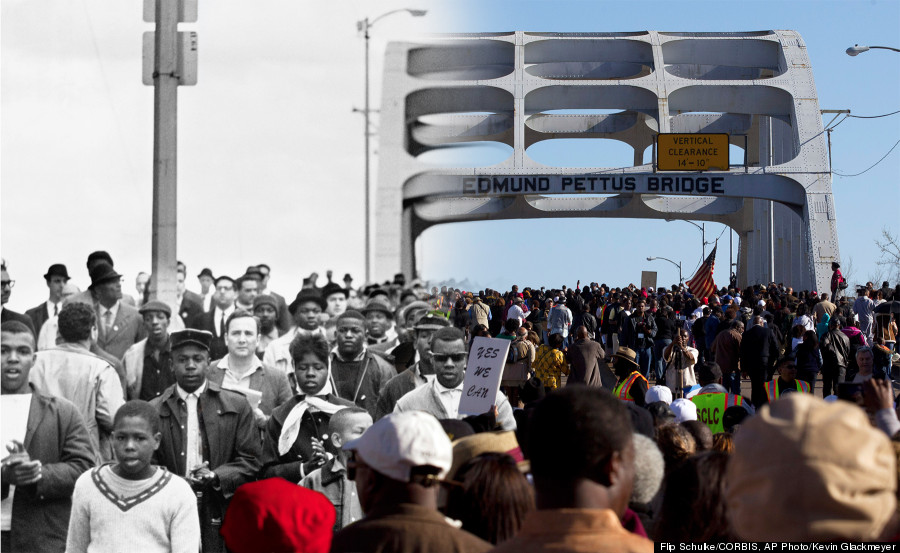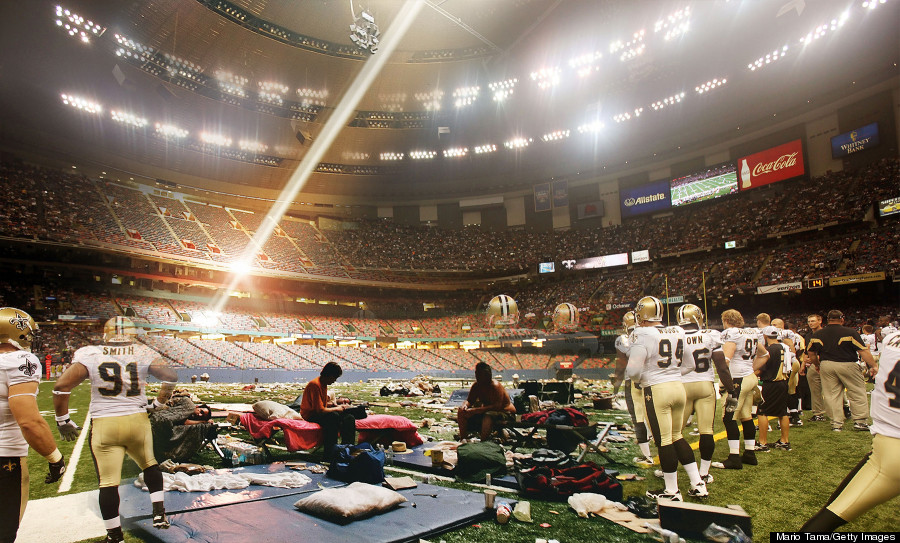History is all around us. And it's not just confined inside the walls of museums. It's on our streets and bridges, inside our buildings and even in our sports stadiums.
Every day, we walk by the very places where people suffered, marched, fought and demonstrated. And although we picture the images in our mind's eye, we can never truly imagine what it was like to be there.
In honor of Black History Month, The Huffington Post has created these images of major events in American history that took place on streets, stadiums and bridges we use every day.
Edmund Pettus Bridge
Forty-nine years ago, the Edmund Pettus Bridge was the site of a horrific attack on some 600 civil rights demonstrators, traveling from Selma to Montgomery. George Wallace, Alabama governor at the time, ordered state and local police to stop the march on grounds of public safety, and the group was confronted by authorities armed with billy clubs and tear gas in what infamously became known as "Bloody Sunday."
The "Bloody Sunday" attack contributed heavily to the passage of the 1965 Voting Rights Act, a law that is widely considered to be the country's most effective piece of civil rights legislation. In March 2013, the bridge was declared an historic landmark, honoring its significance as a site of a major turning point in the Civil Rights Movement.
Credit: FLIP SCHULKE/CORBIS, AP PHOTO/KEVIN GLACKMEYER
L.A. Riots
On April 29, 1992, four Los Angeles police officers were found not guilty of assault and using excessive force after a video surfaced of them brutally beating a black man named Rodney King. The trial verdict set off emotions in the African-American community that had endured police brutality and abuse for years, as the bubbling anger boiled over into what is now known as the 1992 L.A. Riots.
The riots lasted for five days, starting in the southern part of the city and eventually spreading to parts of the Los Angeles metropolitan area. More than 60 people lost their lives during the looting and the fires and hundreds of businesses were burned to the ground, including the Trak Auto store on Washington Boulevard near Norton photographed above. Today, a teriyaki restaurant and fish restaurant stand in its place.
Credit: TED SOQUI/CORBIS
SuperDome
Hurricane Katrina was one of the deadliest, most destructive and costliest storms in U.S. history. More than 1,800 people lost their lives and more than 1 million people were displaced from their homes.
Some 20,000 people sought refuge in the Superdome, home of the New Orleans Saints. But the stadium quickly transformed from a haven of shelter to a horrific site of crime, death and sickness that wasn't much safer or cleaner than the city streets. Multiple instances of rape were reported in the days and weeks after the hurricane and one man committed suicide, jumping 50 feet to his death.
The stadium was slowly evacuated and cleaned in the months after the hurricane, and today the city's beloved Saints football team plays there once again.
Credit: Mario Tama/Getty Images
March On Washington
On August 28, 1963, more than 240,000 Americans traveled to Washington, D.C., for "The March on Washington for Jobs and Freedom." The demonstration marked a pivotal moment in U.S. history, etched in history books as the event where Dr. Martin Luther King Jr. delivered his historic "I Have A Dream" speech, which went on to become acknowledged as the best political speech of the 20th century.
Organized by black, gay activist Bayard Rustin, the march was one of the first demonstrations to be televised. And although 5,000 law enforcement officials were present, no arrests involving marchers were reported. Today, the National Mall is still considered a place for gathering, remembrance and celebration.
CREDIT: POPPERFOTO,LONELY PLANET/GETTY IMAGES